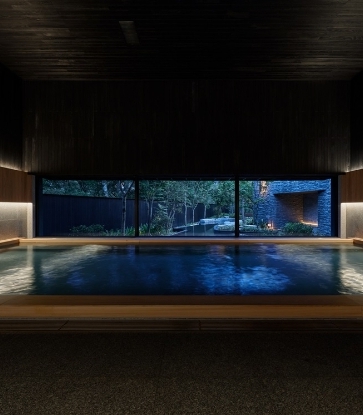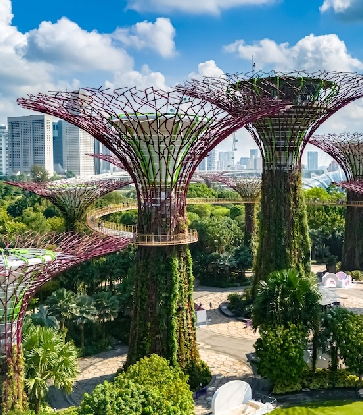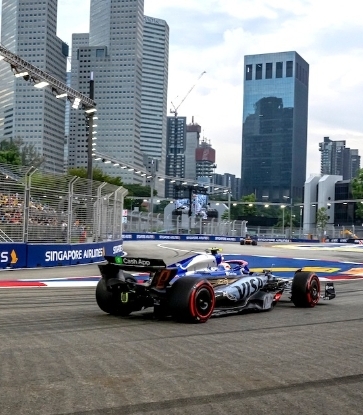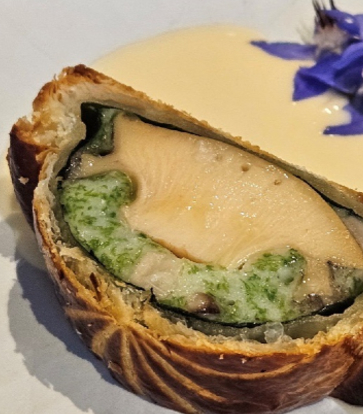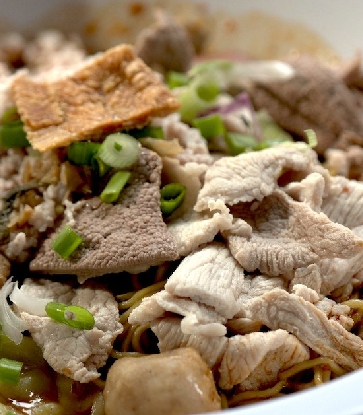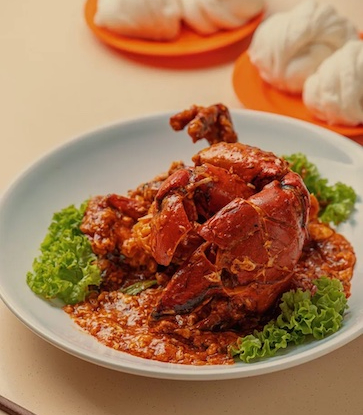In 2018, a mere three weeks before the opening of his restaurant JL Studio in Taichung, Taiwan, Jimmy Lim looked at the modern European menu he had created and was suddenly struck by the thought that it felt “soulless”.

"All dishes had been tried and tested and the kitchen cabinets filled with products and ingredients for European cuisine. But as I looked at the menu, I felt like there was something missing—it felt empty and soulless,” he says.
Born and raised in Singapore, the chef grew up in a family that ran a zichar stall selling stir-fried local dishes like chilli crab and curry fish, cooked to order. Falling in love with the kitchen at a tender age, he decided to make the switch from sports to cooking and began training in Western and French cuisine. But even as his French culinary skills matured, he always felt that there was something missing in his cooking, having never lived in or visited France. "You can be very good at what you do, and draw very close to the subject. But is it you? Does it represent you?”
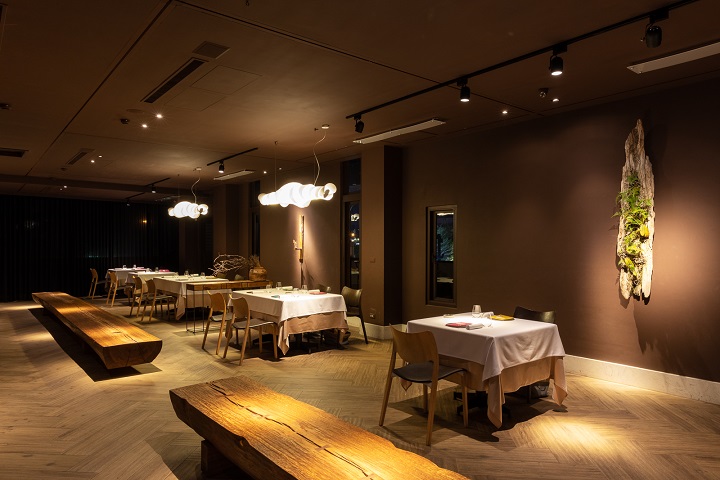
In what many would regard as a risky move, Lim decided to lead his team in a major overhaul of the menu just three weeks before opening: the all-Taiwanese crew were to find themselves leaping headfirst into the world of Singaporean cuisine. "A lot of people think Singaporean cuisine is hawker centre food. But I wanted to elevate Singaporean cuisine for fine dining,” he says. "Spanish cuisine, Italian cuisine… These are all categories on their own. The question on my mind was: ‘Couldn’t Singaporean cuisine stand on its own?’”
Diving into his Singaporean heritage and memories from home, Lim sought to create dishes that would bring a taste of Singapore to his Taiwanese guests, through the ingredients and flavours as well as the stories and cultural significance behind them. More than just deconstructing Singaporean dishes, the chef sought to take his guests on a journey through his Singapore with what he presented on his plates.
A classic Singaporean dish of Hainanese chicken rice has, for example, undergone several interpretations at JL Studio; the most recent rendition does not even contain chicken at all. Instead, Lim has recreated the texture of chicken with white asparagus and shirataki with the fragrant ginger-and-stock scented rice component transformed into a sauce. The creative dish evokes the texture and flavours of Hainanese chicken rice without the chicken or the rice.
One might wonder if the chef ever feels restricted by the cuisine and ingredients from the “little red dot”, but he begs to differ. “Actually, I think it’s the opposite. Having a boundary forces you to be more creative and to generate more ideas and possibilities.”
Lim introduces eight of JL Studio's signature dishes and shares the inspirations behind them. Here, we also show you where to get a taste of the original dishes at MICHELIN-recommended restaurants in Singapore.

Hainanese Chicken Rice
Lim has created several interpretations of Hainanese chicken rice, the latest of which does not even contain any chicken at all. White asparagus poached with bamboo shoots and shredded Chinese pears mimics the texture of chicken meat while silky chicken skin is evoked with shirataki. The elegant, pretty plating of Lim’s rendition could not be further from the rustic dish, but in its taste is a clear echo of the original chicken rice dish. The top layer of a rich rice porridge is also skimmed off and turned into a sauce for his dish, allowing diners to reimagine the texture and flavours of chicken rice without actually seeing chicken or rice.
WHERE TO EAT CHICKEN RICE IN SINGAPORE: No conversation about Singapore food is complete without mentioning chicken rice, and unlike JL Studio’s creative rendition, chicken is definitely the star of the show at these MICHELIN-listed spots for Hainanese chicken rice. Check out: Tiong Bahru Hainanese Boneless Chicken Rice, Tian Tian Hainanese Chicken Rice and Hua Kee Chicken Rice.

Shroom Kut Teh
Lim has made several versions of a popular Singapore pork rib soup dish called bak kut teh. His signature Shroom Kut Teh is one of them, made by boiling a variety of mushrooms, including Bolete mushroom, with garlic and pepper. It is served with stir-fried King Trumpet mushrooms, abalone from the Guguan region in Taiwan Abalone, and aiyu jelly with mimics the texture of lard. While traditional bak kut teh is served with fried dough sticks, Lim’s version features a side of deep-fried mushroom and shredded burdock.
WHERE TO EAT BAK KUT TEH IN SINGAPORE: For a taste of tradition, our inspectors recommend Bib Gourmand establishment Song Fa Bak Kut Teh which has its beginnings in the 1960s selling its celebrated pork ribs and peppery broth from road side pushcart.

Kueh Pie Tee
Inspired by a traditional Peranakan snack that Lim’s grandmother used to make at home, JL Studio’s starter of kueh pie tee is more refined and petite. While his grandmother’s original recipe includes white radish and dried squid stir-fried with oyster sauce, the restaurant’s rendition features carrots, dried squid and sweet aburi peony prawns from Taiwan and Japan. The mixture is seasoned with prawn oil, fish sauce and Thai lime leaves and then served with other fresh herbs and pickled lemons that brightens the savoury dish.
WHERE TO GET KUEH PIE TEE IN SINGAPORE: These crispy cups are a Peranakan mainstay, usually stuffed full of shredded braised turnip, carrot, shrimp and minced garlic. In Singapore, enjoy these as snacks at Bib Gourmand establishments Indocafe- The White House, The Blue Ginger and True Blue Cuisine.

Everything Stinky
A JL Studio entrée called "Everything Stinky” takes inspiration from two Singaporean dishes. Lim brushes caramelised fish sauce on roasted beef short rib to evoke the taste of satay and serves it with green stink beans (petai) cooked in sambal chilli sauce, a Peranakan mainstay. This steak dish is served with potatoes but finished in a quintessentially Asian way, with chopped coriander and fried garlic.
"When I was a kid, as long as there was petai with sambal sauce, I could finish three bowls of rice," Lim says with a laugh. But wary that the polarizing ingredient would not be a hit with all his Taiwanese guests, the chef opted to cook the petai with milk in order to tone down its pungency. "As much as I want to share this ingredient with my guests, my experience with it over the last few years has shown me that you can't force people to like something immediately, but you can allow them space to understand and accept it gradually,” he explains.
WHERE TO TRY SATAY AND SAMBAL PETAI IN SINGAPORE: From authentic Indonesian satay to Chinese-style skewers, Singapore is home to many forms of these grilled meat sticks. In Singapore, our inspectors recommend MICHELIN Plate joints 168 CMY Satay and Chomp Chomp Satay. Petai is commonly cooked with spicy sambal chilli in Singapore’s peranakan cuisine and can be found at one-MICHELIN-starred Candlenut and vegetarian Bib Gourmand restaurant Whole Earth.

Yaw Kun
A household name in Singapore, Ya Kun Kaya Toast is a popular chain of cafes serving a quintessential Singaporean breakfast of kaya toast, soft boiled eggs and coffee. Lim’s breakfast-inspired dessert features an edible egg shell filled with coconut ice cream, salted butter espuma, burnt toast and a sprinkling of coffee powder. Lim playfully tweaks the name to reflect the Chinese character “Yaw” in his own name and serves it with a coffee liqueur cocktail.
WHERE TO HAVE KAYA TOAST & KOPI IN SINGAPORE: While you can find this typically Singaporean breakfast of Hainanese-style kaya toast and soft-boiled eggs with a cup of traditional black coffee at almost every corner of the island, our inspectors recommend The 50s at Chinatown Complex market for its traditional take and atmosphere.

Little India
Growing up, Lim's father would take him often to Singapore’s Little India for meals. A favourite dish from those childhood memories is Rasam Vada, a tangy tomato soup laden with veetables and spices, eaten with Medu Vada, crispy fried lentil rings with onions and green peppers. JL Studio's version features a puree of sweet, colourful tomatoes from Nantou in Taiwan, topped with uni, crushed mozzarella and fragrant curry leaf oil. Accompanying the refreshing soup is a savoury donut of coriander, green peppers, red onions, cumin and sometimes caviar.
WHERE TO FIND RASAM IN SINGAPORE: Rasam is a tangy South Indian-style soup made with tamarind, tomato, herbs and spices to be eaten with fried vada or rice and can be found in MICHELIN-recommended Indian restaurants in Singapore like Lagnaa and Rang Mahal.
RELATED: What To Order At These 6 MICHELIN-Recommended Indian Restaurants
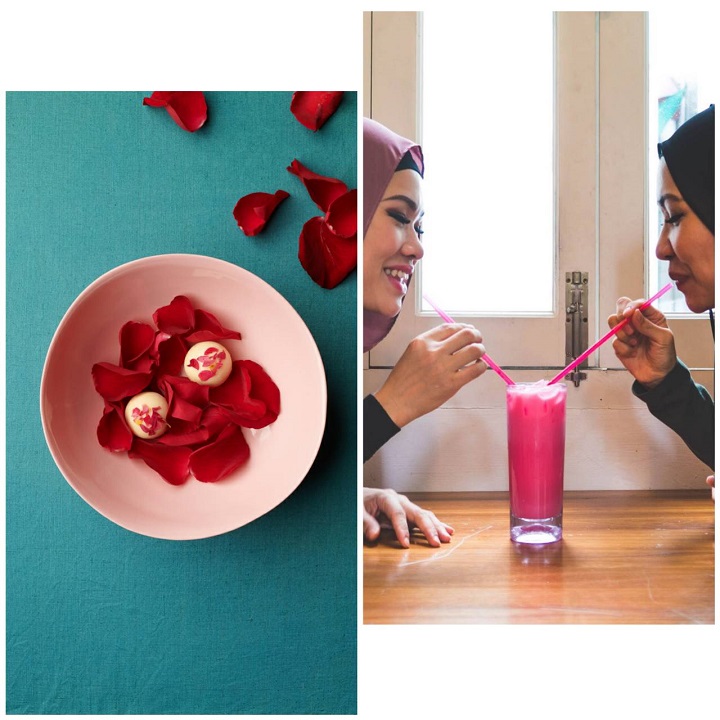
Rose Milk, Bandung
Bandung is a popular cold drink in Singapore made by mixing rose syrup with evaporated milk. "It tastes very sweet. When I was a kid, we would buy big cups of it after playing soccer and it only cost 20 cents,” Lim reminisces. JL Studio's fine dining version features homemade ice cream made with organic roses from Puli township in Taiwan and palm seed (attap seed) coated with white chocolate.
WHERE TO GO FOR BANDUNG IN SINGAPORE: In Singapore, you can still find this syrupy-sweet pink drink at the beverage stall in most local kopitiams (coffee shops). But for the perfect pairing, get a tall glass of bandung to drink with the wide range of Malaysian-Indonesian nasi padang dishes at Bib Gourmand Hjh Maimunah.

Tau Suan
In Singapore, the traditional Teochew dessert of tau suan is a thick sweet soup made with mung bean and water chestnut powder. The starchy soup is best enjoyed with youtiao, or fried dough sticks. Lim's version is a delicate sugar dome encasing fermented mung bean sorbet and chewy mung bean noodle (liangpi). Garnished with pretty little yellow and white blooms, the dessert evokes the taste of traditional tau suan while elevating the flavours and presentation of the dish.
WHERE TO EAT TAU SUAN IN SINGAPORE: This dessert is a Teochew specialty and is all about the texture of the cooked mung beans and balance of sweetness, best savoured with fried dough sticks to mop up all the starchy goodness. Find an excellent rendition at one-MICHELIN-starred Imperial Treasure Fine Teochew Cuisine in Singapore.









